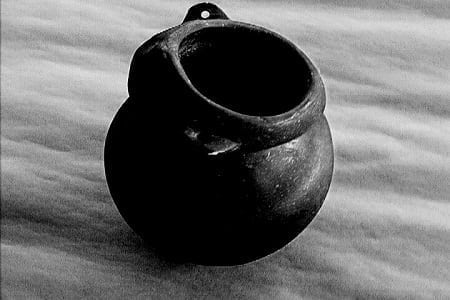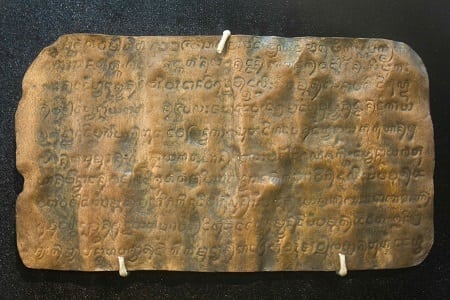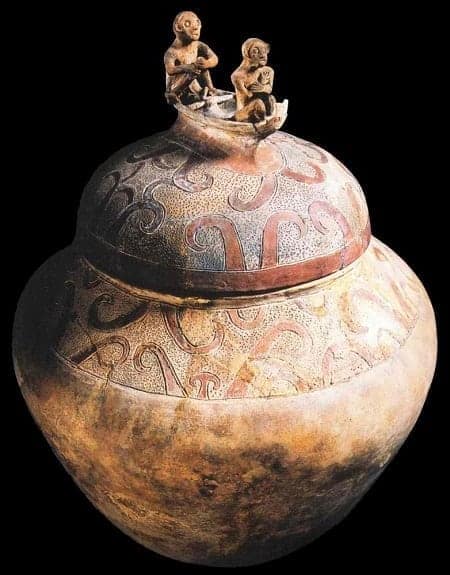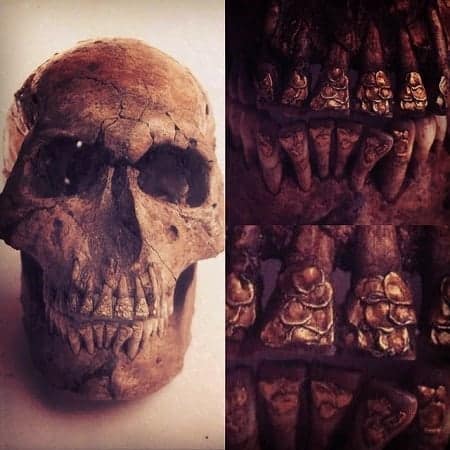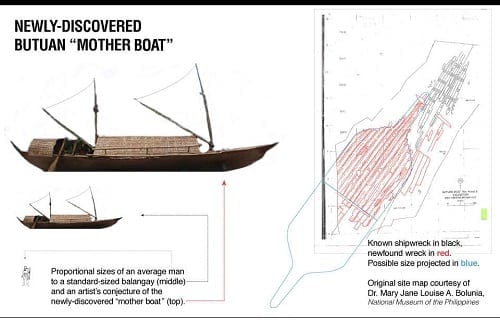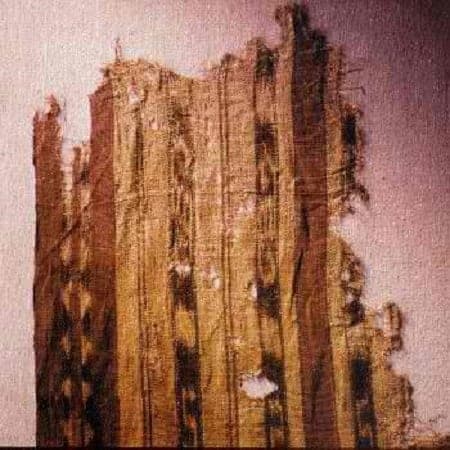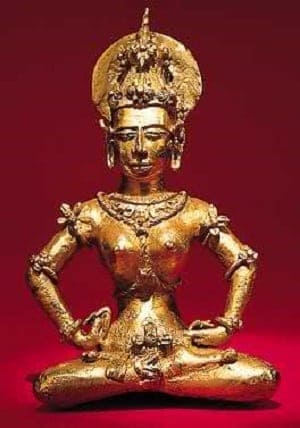Artifacts in the Philippines: 17 Most Intense Archaeological Discoveries
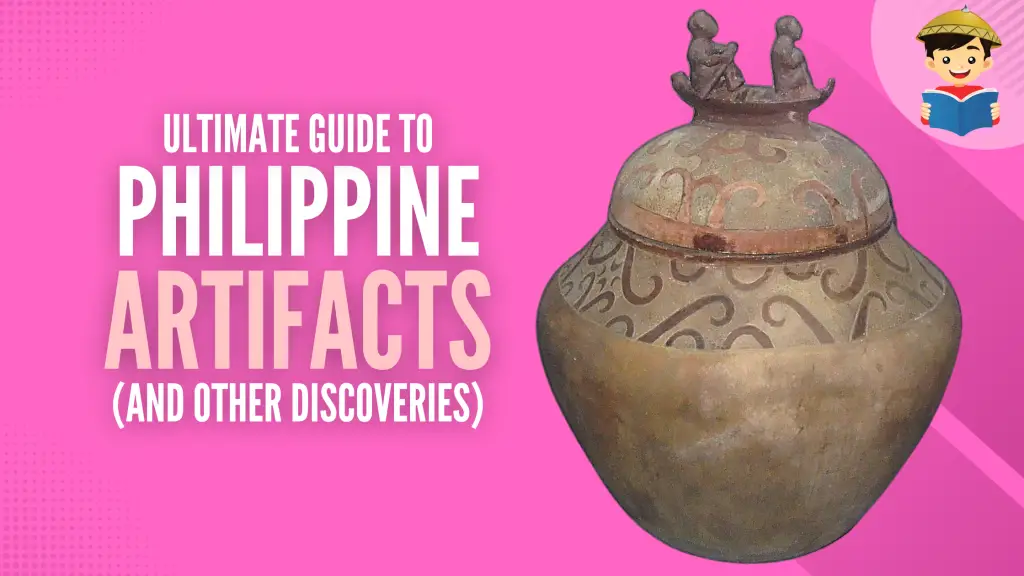
Archaeology is the study of whatever our ancestors have left behind. It may sound boring, especially if you prefer to read battle stories than discover artifacts that are too museum-y for your taste.
Related: 7 Prehistoric Animals You Didn’t Know Once Roamed The Philippines
However, the prehistoric Philippines isn’t just all about crude tools and stones; ancient Filipinos also left behind amazing treasures for us to marvel at.
From a human foot bone to an ancient “castle” in the North, here are some of the fascinating archaeological finds and artifacts in the Philippines.
Table of Contents
First Things First – The Different Types of Archeological Materials
Different types of archeological materials can be found upon excavation. Archeologists classify these materials based on characteristics.
These materials can be classified into three main groups: artifacts, ecofacts, and features.
1. Artifacts
These refer to any objects made by people during a particular time and place for a specific use. These could refer to tools, clothing, jewelry, or pottery.
Artifacts are considered items of cultural or historical importance because they can provide a window into people’s daily lives in the past. We can learn how ancient people interact with their community and environment by studying artifacts.
To be considered an artifact, the object must be portable and, thus, can be removed from its original site and preserved.
2. Ecofacts or Biofacts
These are the natural remains of living creatures that have been preserved. Examples of ecofacts are bones, seeds, shells, plant remains like wood and charcoal, and others.
However, natural remains that humans have altered are considered artifacts, not biofacts. An example of this is the wooden tools made by people in the past.
Ecofacts are helpful to archeologists because they tell stories about the conditions of ancient wildlife and the environment. They are usually found along with artifacts and/or features, providing additional insight into these materials. Like artifacts, ecofacts must be portable and remain intact upon extraction from the original site.
3. Features
This is the collective term for all archeological materials that cannot be removed from their original site at the risk of changing their original form. Features are modified by human activity and can refer to structures, imprints on the ground, burial sites, pits, and others.
Features represent how human civilizations interact and mold their environments to suit their way of living better.
Fascinating Archaeological Discoveries and Artifacts in the Philippines
1. The “Yawning” Jarlet of Leta-Leta Cave
This jarlet, declared a National Cultural Treasure, is the earliest pot recovered in the country. It has a distinct rim that resembles a shouting or yawning person, hence the name.
Related: 12 Surprising Facts You Didn’t Know About Pre-Colonial Philippines
Discovered by Dr. Robert Fox in Leta-Leta Cave, northern Palawan, in 1965, this jarlet is associated with the Late Neolithic period (approximately 1000 to 1500 BC). It was excavated in a burial site where a stone adze and other intact pieces of pottery, including a stem cup and a footed jarlet, both of which are also declared national cultural treasures, were recovered.
2. The Callao Man
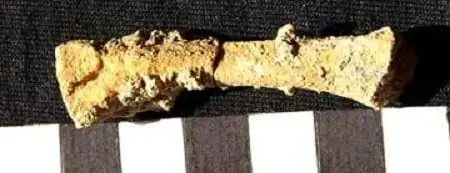
In 2007, a group of archaeologists led by Dr. Armand Mijares of U.P. Diliman discovered a foot bone in Callao Cave in Peñablanca, Cagayan. The said skeletal remain–specifically the third metatarsal of the foot–is said to be “the earliest human fossil found in the Asia-Pacific region.”
Based on a method called “uranium-series dating,” it was also revealed that the foot bone is approximately 67,000 years old, predating the “Tabon Man”–long been thought to be the country’s earliest human remains–which is only 50,000 years old.
Related: The Legendary Gods and Goddesses of Philippine Mythology
According to experts, the Callao Man possibly reached the island of Luzon from Indonesia by raft, suggesting that our ancestors already possessed “knowledge of seacraft-making in this early period.”
However, other experts believe that the Callao Man is probably just a species closely related to humans and was a product of an evolutionary process called “human speciation.”
3. The Laguna Copper Plate Inscription (LCI)
Accidentally discovered in 1986 near the mouth of the Lumbang River, the Laguna Copper Plate Inscription or LCI is the earliest historical document in the country and the only pre-Spanish document discovered so far. Now a National Cultural Treasure, the LCI measures 7 x 12 inches when unrolled.
In 1990, the National Museum purchased the LCI and sought help from Antoon Postma, a Dutch national and director of the Mangyan Assistance and Research Center, to decipher the inscription.
Postma, with the help of Dr. Johan de Casparis, later found out that the LCI was written in Kavi (Old Javanese writing system), and the language used was a combination of Old Tagalog, Old Javanese, Old Malay, and Sanskrit.
Related: Shocking Philippine Hoax – The Code of Kalantiaw
Even more surprising is that the Philippines’ oldest document was neither a poem nor a song but a legal document called suddhapattra which, in today’s context, is a receipt for payment of a debt.
According to Postma’s interpretation, the document was written on the fourth day of the waning moon of the month of Waisakha in the Shaka year 822 (April 21, 900 CE by the Western calendar). It stated that the debt of gold amounting to one kati and eight swarna (equivalent to 865 grams) owned by Namwaran was canceled, and the document was given to his daughter, Angkatan.
4. The Flying Elephant of Lena Shoal

Another National Cultural Treasure, this blue-and-white dish with a flying elephant design is one of only two pieces ever recovered worldwide. It was retrieved from the Lena Shoal wreck site in Palawan in 1997 through an underwater exploration project initiated by the Far Eastern Foundation for Nautical Archaeology (FEFNA) and the National Museum.
Made during the Middle Ming Dynasty (ca. 1500), the porcelain dish was recovered from the wreck site of a Chinese trading vessel. It features black and brown specks in the paste and a lotus scroll with pointed leaves on the rim.
In its center, you can see a dark-blue flying elephant design made even more dramatic by stormy and foamy waves.
5. The Manunggul Jar
The Manunggul jar was only one of several stunning artifacts discovered in Chamber A, Manunggul Cave in Lipuun Point, Palawan, by a group of archaeologists who investigated the site from 1962 to 1965.
In addition to burial jars, they also recovered human remains covered in red paint and adorned with bracelets made of jade, shells, and stone beads.
Measuring 66.5 x 51.5 cm, the Manungggul jar is a secondary burial jar used to store the bones of someone previously buried. The lid features a “spirit boat” or “ship of the dead” carrying two souls on a journey to the afterlife.
Related: 9,000-year-old de-fleshing ritual revealed in the Philippines
The front figure–whose hands are folded across (a common practice in arranging the corpse during the prehistoric period)–is the passenger, while the figure in the back guides the journey, as evidenced by the now-missing paddle. Both figures are wearing a band tied over the crown of the head and under the jaw, a pattern that is still a part of the burial practices of some indigenous groups in the southern Philippines.
On the other hand, the jar’s body is covered with a unique curvilinear design made of hematite or natural iron.
The Manunggul jar–dated to the Late Neolithic period (890-710 BC)–has a very intricate design that, in the words of archaeologist Robert B. Fox, “is perhaps unrivaled in Southeast Asia, the work of an artist and a master potter.”
6. Oton Death Mask
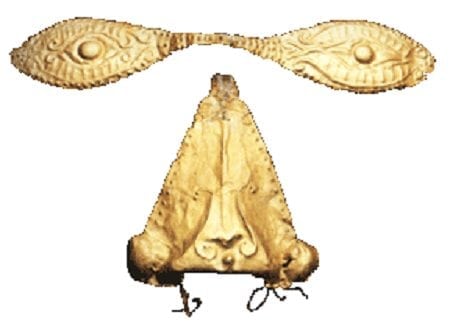
The gold death mask of Oton, another National Cultural Treasure, was discovered in the 1960s by Alfredo Evangelista and F. Landa Jocan. It consists of a gold nose disc and eye mask, both found on a gravesite in San Antonio, Oton, Iloilo.
The gold mask–dating from the late 14th to the early 15th century A.D.–is the first of its kind recovered in the Philippines. It was part of ancient burial practice, with the gold mask serving as an amulet against evil spirits.
Related: The Golden Death Masks of Cebu
The death mask was made by cutting out two thin gold sheets. The pieces would then be placed on a soft surface, after which the craftsman would use a pointed tool to press the intricate design from behind.
The practice of using a gold mask to cover the face of the dead was brought to the Philippines by the southern Chinese. Around that time, Oton was a center of the trade route, so it didn’t take long before a limited group of Filipinos started to adopt the custom.
7. Bolinao Skull
The formidable Bolinao Skull is only one of 67 skulls recovered from the Balingasay Archaeological Site in Bolinao, Pangasinan. They were found along with several Early Ming dynasty (1368-1644) ceramics.
The skulls have teeth decorated with gold ornaments, symbolizing wealth and bravery during the prehistoric era.
The Bolinao Skull (shown above) stands out because gold scales were observed: “on the buccal surfaces of the upper and lower incisors and canines.” The gold decorations have flat rounded tops in a bored hole on the teeth. These gold ornaments overlap one another, making them look like fish scales.
8. Maitum Anthropomorphic Burial Jar
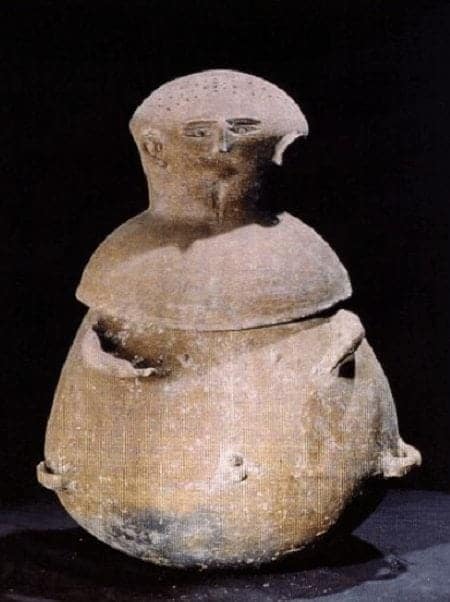
In 1991, archaeologists from the National Museum excavated several clay burial jars in Ayub Cave, Pinol, Maitum, Saranggani Province. These Metal Age (ca. 5 BC to 225 AD) jars depict human beings and feature three types of heads: Plain, with perforations, and with red (hematite) and black (organic matter) paints.
The Maitum anthropomorphic burial jars also show different facial expressions, setting them apart from any funeral pottery–including Palawan’s Manunggul jar–previously recovered in the Philippines.
Related: The “Fire Mummies” of Kabayan Burial Caves
Jar No. 21 (see photo above) is the most unique among the many anthropomorphic burial jars recovered in Ayub Cave. Aside from being the first anthropomorphic jar excavated intact, Jar No. 21 is the only jar depicting a male sex organ. It also has a navel, two arms, two ears (which seem to be both right ears), and two nipples. The head is perforated, while the lips are painted with red hematite.
When it was discovered, Jar No. 21 contained a deciduous human tooth, bone fragments, shells of land snails, and limestone pebbles.
9. Butuan “Mother Boat.”
In 2012, the remains of what archaeologists believe to be the biggest balangay (plank boat) in Philippine history were recovered in Butuan City.
Estimated to be around 800 years old, the newly-discovered Butuan “mother boat” may be centuries older than the European ships that landed in the archipelago in the 16th century and even predates Magellan’s arrival and death in 1521.
According to National Museum archeologist Dr. Mary Jane Louise A. Bolunia, the said “mother boat,” estimated to be at least 25 meters long, is believed to be the main “safekeeping” boat where trade goods and supplies were stored. On the other hand, the smaller balangays–similar to the eight previously-recovered Butuan boats–might have functioned as mere support vessels.
Although a long and careful study is still needed to prove that the discovery is an authentic balangay, its proximity to previous balangay excavation sites seems to promise a positive result.
10. San Diego’s Astrolabe

San Diego was a Spanish galleon that sank on December 14, 1600, claiming the lives of 259 people. In 1992, the shipwreck was discovered off Fortune Island in Nasugbu, Batangas. Among the artifacts recovered were cannons, anchors, guns, Mexican jars, and a rare navigational device called an astrolabe.
Estimated to be 400 years old, San Diego’s astrolabe–now a National Cultural Treasure–is one of only two existing astrolabes worldwide.
After the recovery, the dimensions of the astrolabe were described as follows:
“….weighed 2, 434 grams, measured 182.5 mm in diameter, and was between 17 mm thick at the top and 18 mm thick at the bottom…The core consisted of three spokes without footers. The intersection of the three spokes and the one which supported the counterweight was in the form of a circular medallion…
The upper semicircle was graduated in intervals of 5 degrees, but the numbers are not indicated, a characteristic this astrolabe shares with the Valencia astrolabe in the Greenwich Maritime Museum.”
11. The “Death Blanket” of Banton, Romblon
The Banton burial cloth, another National Cultural Treasure, is just a piece of the blanket used by Filipinos in the 13th to 14th centuries to wrap around a corpse. It was found in the 1960s inside the Guyangan Cave in Banton, Romblon, along with other artifacts such as Ming period blue and white ceramics.
Also known as ikat, the burial cloth is said to be the oldest existing cloth in the country and possibly the oldest warp ikat textile in Southeast Asia.
12. The Limestone Tombs of Mt. Kamhantik
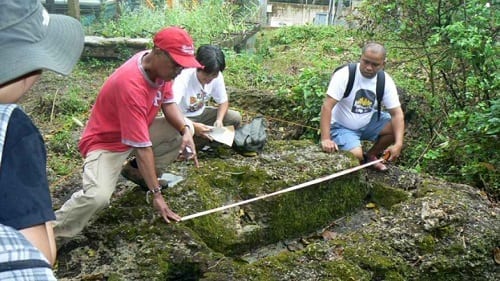
From 2011 to 2012, National Museum archaeologists unearthed 15 limestone tombs and other valuable artifacts in Mt. Kamhantik near Mulanay town in Quezon province.
The archaeological site- part of a 280-hectare government-protected land- is believed to be where a 1,000-year-old village once stood.
Unlike other archaeological sites previously explored in the country, this burial ground features limestone coffins–a first in the Philippines and proof that our ancestors also used a more advanced burial ritual.
Related: The Hanging Coffins of Sagada
Aside from the limestone coffins, archaeologists also recovered earthen jars, metal objects, and skeletal remains of both humans and animals. Based on the carbon dating tests done on the human tooth found in one of the graves, the village existed approximately during the 10th to 14th centuries.
The tombs in Mt. Kamhantik were similar to Egypt’s ancient sarcophagus, but unlike the latter, the limestone coffins lacked elaborate designs and mythological symbols.
13. Batanes Castle
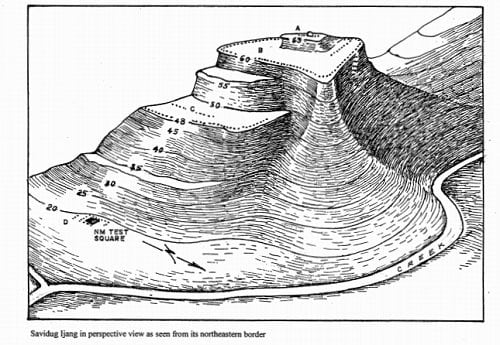
In 1994, Dr. Eusebio Dizon, deputy director of the Archeology Division of the National Museum, went to Batanes with a team of experts for an extensive archaeological project.
One of their surprising discoveries was a triangular-shaped hill at Savidug, a municipality in Sabtang. They learned this was one of four high rocky formations locally known as ijang (also spelled as idjang).
Related: Interesting Facts You Might Not Know About Batanes
Dizon’s team found evidence that these idjangs were used for habitation and fortification. In other words, they functioned as a castle, similar to European structures in terms of purpose but not appearance.
Interestingly, the Savidug Idjang also shares similarities with the Okinawan castles called gusuku, located in the Ryukyu Islands between Japan and Taiwan.
The builders of idjang and gusuku were selective in choosing the natural topography to be utilized: Both structures were strategically built in high places. The artifacts found in Savidug, such as 12th-century Chinese beads and Sung-type ceramics, prove that the idjang’s establishment coincided with the foundation of the Okinawan castles beginning in c. AD 1200.
The inhabitants of Savidug Idjang survived by fishing and hunting, as evidenced by several ecofacts found in the area, such as the skeletal remains of fish, birds, and other animals.
14. The Calatagan Ritual Pot

The Calatagan Ritual Pot is a National Cultural Treasure dating back to the 14th and 16th centuries. It was discovered by diggers in an archaeological site in Calatagan, Batangas, in 1958 and donated to the National Museum in 1961.
Measuring 12 cm. high and 20.2 cm. at its widest and weighing 872 grams, this pot is considered the country’s oldest cultural artifact with pre-Hispanic writing. It is distinct because of the mysterious ancient symbols inscribed on its shoulder.
Several attempts were made to decipher the inscription on the pot. In the 1960s, famed sculptor Guillermo Tolentino allegedly tried to communicate with the spirits of the dead to come up with a translation. The scientific community dismissed his output- suggesting that the pot was an offering of a son or daughter to a dead mother.
Other previous attempts also failed, primarily because of the three major obstacles in translating the inscription: (1) The equivalents of many symbols are unknown; (2) Language is also unknown; and (3) The start and end of words, as well as the consonants of some words, are hard to determine.
Fortunately, in 2008, Dr. Rolando O. Borrinaga of U.P. Manila finally came up with a reliable translation. He concluded that the inscription was written in the old Bisayan language, and the pot was used as a “native incense burner for the pag-ulî (return) rite to retrieve the soul of a moribund person during the pre-Hispanic era.”
He added that the inscription “provides the outline of a three-stage monologue, presumably elaborated by a babaylan (native priestess) in a trance during the pag-ulî ritual.”
The following is Borrinaga’s translation:
Is it open now for sure? [the gateway to the spirit underworld]/
Take it as a gain already, dakit [Tag., balete] tree/
That [the soul] confused you for a mango tree/
[It] just crossed out of fear [to your domain] alone, is that so?/
Leave the dakit tree now, will you?/
Shame/Bring [back] the soul that you [were told to] encounter, okay?
15. The Golden Tara of Agusan
This golden figurine of a female deity is the first image identified to be of Indian origin. In 1917, it was accidentally discovered by a Manobo woman on the banks of the Wawa River in Agusan, Mindanao, after heavy rain. Shortly after, the Philippines’ pioneer prehistorian H. Otley Beyer declared it “the most spectacular find yet made in Philippine archaeology.”
The gold Agusan image, which measures five and a half inches tall and weighs nearly four pounds of 21-carat gold, is now displayed in the Field Museum of Natural History in Chicago, USA.
As for its origin, Beyer suggested that it was made by a Javanese expatriate who was mining Agusan for gold at that time. Dutch historian F.D.K. Bosch, on the other hand, said that a pre-colonial Filipino made it because the design lacks distinct Javanese craftsmanship.
If the second theory is to be believed, the gold image of Agusan suggests that the traders from the Hindu-Malayan culture, such as the Majapahit Empire influenced the prehistoric Filipinos. The Visayas, for instance, is said to be named after the last Southeast Hindu Prince, Srivijaya.
16. The Angono Petroglyphs
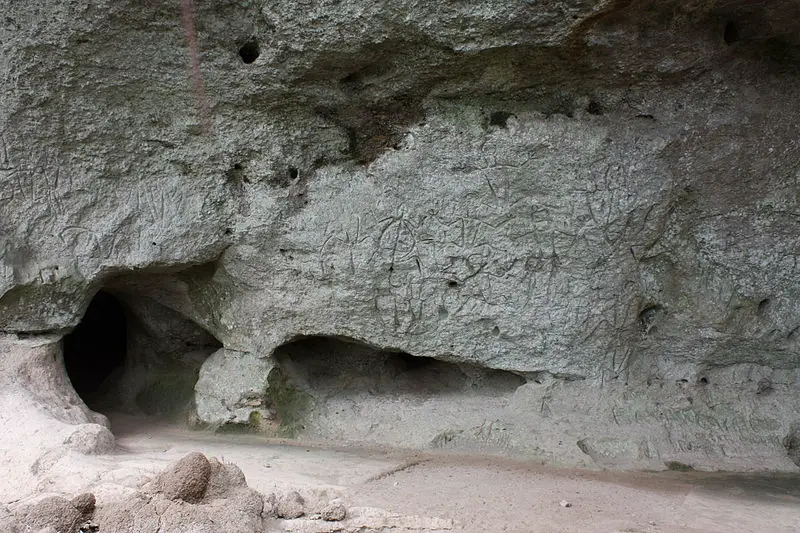
The Angono Petroglyphs refer to over 120 engraved figures on a rock wall in Angono, Rizal. The petroglyphs cover most of the rock wall, which measures around 63 meters wide and 5 meters tall. The rock wall is believed to be part of a makeshift rock shelter used by people in the past.
Besides the wall carvings, fragmented earthenware and stone tools were also found. Dating of the artifacts suggested that the rock shelter was used during the Neolithic age (around 2500 BC), making the Angono Petroglyphs the oldest known work of art in the Philippines.
According to UNESCO, the Angono Petroglyphs are “symbolic representations associated with healing and sympathetic magic.” The petroglyphs depict humans performing religious rituals to heal sickness. Because of the different styles in which these petroglyphs appear, researchers believe multiple individuals carved them within a group.
The rock shelter was first discovered and reported to the National Museum by Carlos V. Francisco, one of the late National Artists of the Philippines, back in 1965. In 1973, the Philippine government declared the Angono Petroglyphs a National Cultural Treasure to preserve the site and protect it from vandalism and environmental erosion.
Similar petroglyphs have also been spotted in different parts of the Philippines. These are the Alab Petroglyphs of Mountain Province, the Penablanca Petrographs of Cagayan Province, and the Anda Peninsula Petrographs of Eastern Bohol. Like the Angono Petroglyphs, these sites have also been declared National Cultural Treasures of the Philippines.
17. The 700,000-year-old Rhino Hunting Tools

During an archeological excavation in the Kalinga province in 2014, researchers uncovered the fossil remains of a rhinoceros dated to be around 700,000 years old. Moreover, they also uncovered over 57 stone tools along with the rhino fossils.
Upon observing various tool marks on the bones, the researchers concluded that the stone tools were used for hunting and butchering the animal for their meat.
This discovery suggests that modern humans might have occupied the Philippine islands much earlier– nearly 600,000 years earlier than previously thought. Consequently, this makes the Kalinga province the oldest site in the Philippines for human occupation.
However, there is no definite proof of who was responsible for using the stone tools or butchering the rhino.
According to Dr. Gert van den Bergh, a paleontologist that was part of the discovery team, the most likely culprit is the Homo erectus, the first modern human believed to have ventured out of Africa. Researchers also speculate that the Homo floresiensis (also known as “hobbits”) is another likely candidate.
The identity of the Kalinga toolmakers is still debated among archeologists and paleontologists.
References
Alonso, R. (2014). The castles of Batanes. [online] philSTAR.com. Available at: http://goo.gl/xWY2Tc [Accessed 27 Aug. 2014].
Borrinaga, R. (2010). The Calatagan Pot: A National Treasure with Bisayan Inscription.
Dimacali, T. (2013). Massive balangay ‘mother boat’ unearthed in Butuan. [online] GMA News Online. Available at: http://goo.gl/orrjZF [Accessed 27 Aug. 2014].
Dizon, E. (1996). Archaeology of Batanes Province, Northern Philippines: The 1996-1997 Status Report. [online] Available at: http://goo.gl/zEXHFD [Accessed 27 Aug. 2014].
Fish, S. (2011). The Manila-Acapulco Galleons: The Treasure Ships of the Pacific : with an Annotated List of the Transpacific Galleons, 1565-1815. 1st ed. AuthorHouse.
FOX News, (2012). Archaeologists find lost tombs, village on Philippine mountain. [online] Available at: http://goo.gl/TEmk3Q [Accessed 27 Aug. 2014].
Halili, C. (2004). Philippine History. 1st ed. Sampaloc, Manila: Rex Bookstore, Inc., p.47.
Miksic, J. (2003). Earthenware in Southeast Asia: Proceedings of the Singapore Symposium on Premodern Southeast Asian Earthenwares. 1st ed. NUS Press.
National Museum Collections, (2014). National Cultural Treasures of Philippine Archaeology. [online] Available at: http://goo.gl/6avlj8 [Accessed 25 Aug. 2014].
Ocampo, A. (2012). Looking Back 6: Prehistoric Philippines. 1st ed. Mandaluyong City: Anvil Publishing, Inc., pp.51-56; 57-61; 67-72; 73-77; 78-82; 83-87; 88-92.
Rivas, R. (2018). Slaughtered rhino from Kalinga just changed world history. Retrieved 19 October 2020, from https://www.rappler.com/nation/killed-rhinoceros-remains-kalinga-world-history
Severino, H. (2010). Researchers discover fossil of human older than Tabon Man. [online] GMA News Online. Available at: http://goo.gl/rtdvR1 [Accessed 26 Aug. 2014].
Woods, D. (2006). The Philippines: A Global Studies Handbook. 1st ed. Santa Barbara, California: ABC-CLIO, Inc., pp.18-20.
Ruth Raganit
Ruth Raganit obtained her Bachelor of Science degree in Geology from the University of the Philippines – Diliman. Her love affair with Earth sciences began when she saw a pretty rock and wondered how it came to be. She also likes playing video games, doing digital art, and reading manga.
Copyright Notice
All materials contained on this site are protected by the Republic of the Philippines copyright law and may not be reproduced, distributed, transmitted, displayed, published, or broadcast without the prior written permission of filipiknow.net or in the case of third party materials, the owner of that content. You may not alter or remove any trademark, copyright, or other notice from copies of the content. Be warned that we have already reported and helped terminate several websites and YouTube channels for blatantly stealing our content. If you wish to use filipiknow.net content for commercial purposes, such as for content syndication, etc., please contact us at legal(at)filipiknow(dot)net
